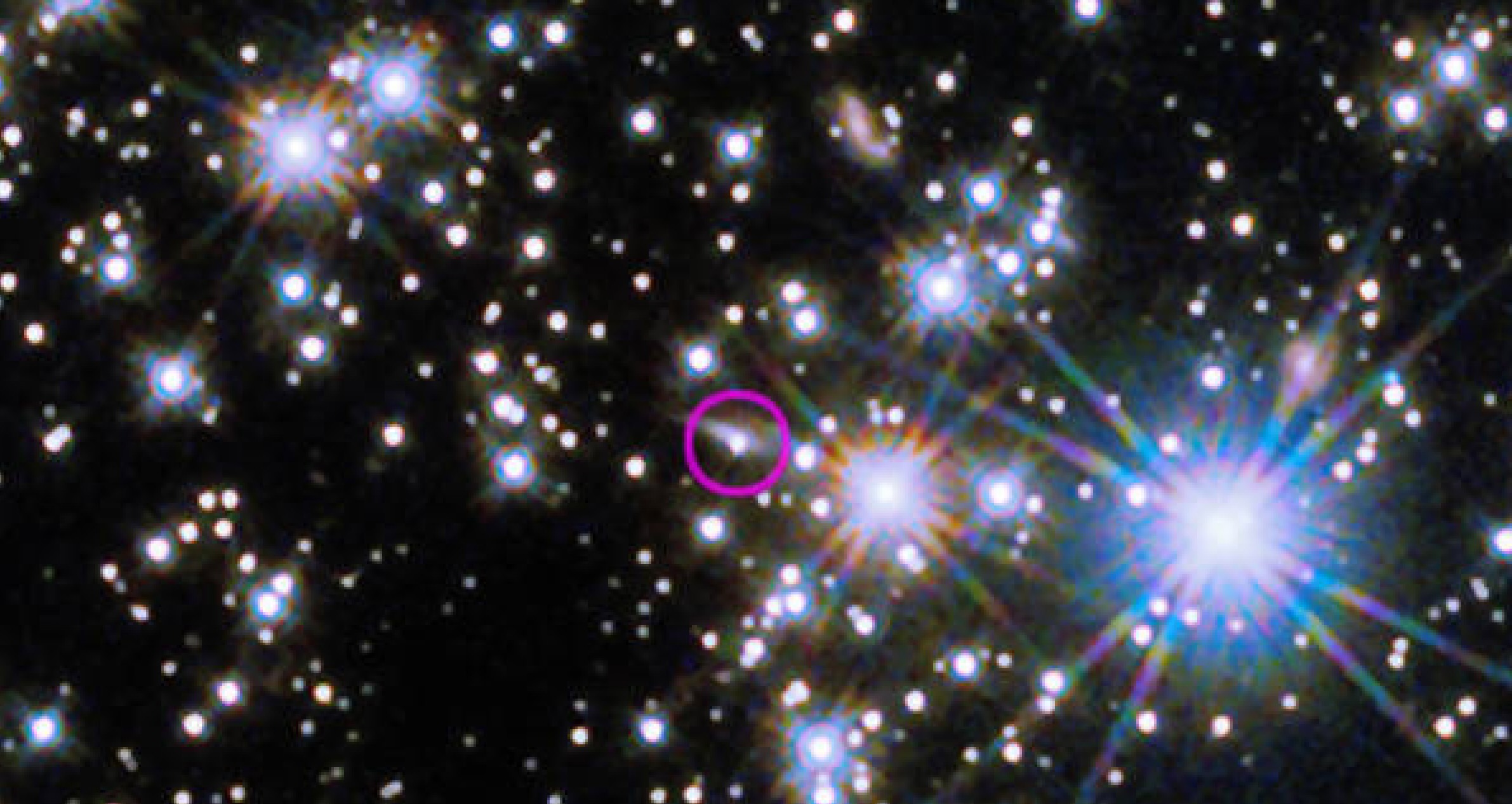An extragalactic outburst whose light hurtled through the inner solar system last fall was 70 times brighter than any other such eruption that scientists have observed, researchers report.
Radiation from the explosion — a gamma-ray burst (GRB) known as GRB 221009A — swept over Earth on Oct. 9, 2022. It saturated gamma-ray detectors on multiple space telescopes, earning the nickname the BOAT, short for "brightest of all time."
Astronomers continued studying the BOAT with a variety of instruments for several months afterward, seeking to characterize the explosion further. And those efforts have only added to the BOAT's legend.
"It is just an absolutely monstrous burst. It is extremely extraordinary; we've never seen anything remotely close to it," Eric Burns, an assistant professor of physics and astronomy at Louisiana State University, said Tuesday (March 28) during a press conference at the 20th meeting of the American Astronomical Society's High Energy Astrophysics Division in Hawaii.
"The BOAT is a once-in-10,000-year event," Burns added. "So, there's a reasonable chance this is the brightest gamma-ray burst to hit Earth since human civilization began."
Related: What is a gamma-ray burst?
The brightest explosion of all time
It is just an absolutely monstrous burst."
Eric Burns, astronomer at LSU
GRBs are the most powerful explosions in the universe. They generate more energy in mere seconds than Earth's sun will produce over its entire 10-billion-year lifetime.
Breaking space news, the latest updates on rocket launches, skywatching events and more!
Astronomers recognize two different classes: short GRBs, which last about two seconds or less, and long ones, which can continue for multiple minutes. The short variety is likely spawned by collisions of superdense stellar corpses known as neutron stars, astronomers say. Most long GRBs, on the other hand, are generated by black holes born as massive stars collapse and die.
"So, you have the core collapse; this creates a black hole. The black hole powers jets that propagate out at just under the speed of light," Burns said.
"As these jets go out, they release their energy in the form of prompt gamma-ray burst emission," he added. "This is followed by what's known as afterglow, and at later times, the energy deposited into that star powers a supernova explosion."
The BOAT was a long GRB, so researchers expect a supernova to emerge at its locale, a spot about 1.9 billion light-years from Earth. But they haven't found one yet, despite searching the area with NASA's James Webb Space Telescope and Hubble Space Telescope, along with other instruments.
"If it's there, it's very faint," Andrew Levan, a professor of astrophysics at Radboud University in the Netherlands, said in a NASA statement on Tuesday. "We plan to keep looking, but it's possible the entire star collapsed straight into the black hole instead of exploding."
Why so bright?
GRB jets tend to be relatively narrow, so most of them don't sweep over Earth. But these astrophysical events, though extreme, are common enough to be observed in bulk. Astronomers have catalogued about 12,000 GRBs to date using data gathered by tools such as NASA's Fermi Gamma-ray Space Telescope and Konus, a Russian instrument that flies on NASA's Wind spacecraft, Burns said.
He led an analysis that dug deep into the GRB record, establishing the BOAT's brightness bona fides. And other work showed that this superlative brightness didn't stem from overly powerful jets.
"When you compare the energy in this jet, it's very similar to the energy of jets we've seen in other GRBs," Kate Alexander, an assistant professor of astronomy at the University of Arizona, said during Tuesday's press conference.
"So then, why was it so bright?" she added. "It turns out that all of the energy in this jet was focused into a very narrow angle. So, all of the particles moving in this jet were very, extremely narrowly beamed, and that narrow beam happened to be focused right at Earth."
She compared the effect to a garden hose, with the BOAT's jet analogous to the more-intense spray you get by using a constricting nozzle.
Astronomers had to put some of their BOAT observations on hold a few months ago, as the source region went behind the sun from Earth's perspective. But that area is now coming back into view, and researchers are ready.
"More observations, including with Hubble and with Webb, are going to be undertaken in the next few weeks and months," Levan said during the Tuesday telecon.
He and a number of other researchers are especially keen to determine whether or not the BOAT spawned a supernova.
"Watch this space for what we hope will be a more conclusive answer!" Levan said.
Researchers reported these and other BOAT results in a special issue of The Astrophysical Journal Letters.
Mike Wall is the author of "Out There" (Grand Central Publishing, 2018; illustrated by Karl Tate), a book about the search for alien life. Follow him on Twitter @michaeldwall. Follow us on Twitter @Spacedotcom or on Facebook.

Michael Wall is a Senior Space Writer with Space.com and joined the team in 2010. He primarily covers exoplanets, spaceflight and military space, but has been known to dabble in the space art beat. His book about the search for alien life, "Out There," was published on Nov. 13, 2018. Before becoming a science writer, Michael worked as a herpetologist and wildlife biologist. He has a Ph.D. in evolutionary biology from the University of Sydney, Australia, a bachelor's degree from the University of Arizona, and a graduate certificate in science writing from the University of California, Santa Cruz. To find out what his latest project is, you can follow Michael on Twitter.


